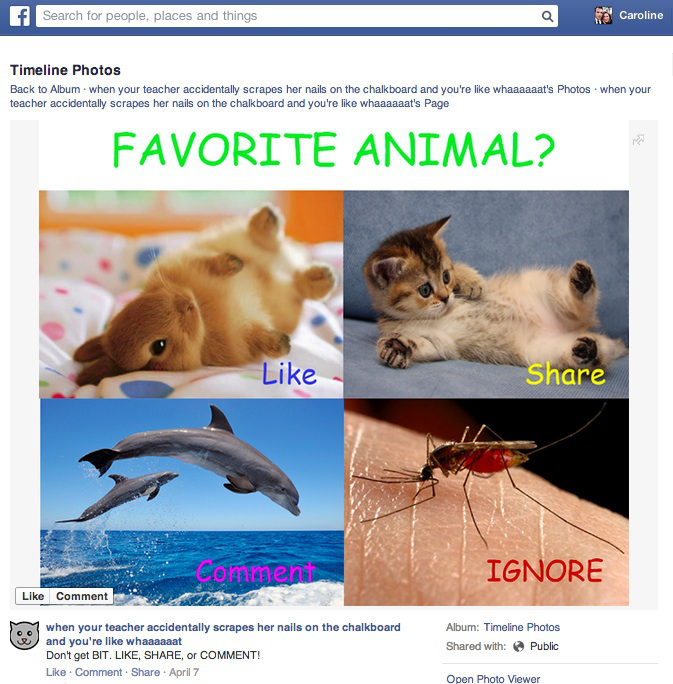
Facebook today announced plans to clean up the News Feed by reducing stories that users are reporting as spammy or simply that they don’t want to see. This update targets three broad categories: Like-baiting posts, repeated content, and spammy links.
Like-baiting refers to when a post explicitly asks News Feed readers to like, comment, or share the post. In other words, the goal is to go viral, or at least get additional distribution beyond what the post would normally receive.
Here’s an example:
Facebook admits this is a technique that works, as users “often respond to posts asking them to take an action,” which in turn means these posts get shown to more people and are pushed higher up in the News Feed. Facebook is tweaking its News Feed algorithm to better detect these stories and help ensure that they are not shown more prominently than more relevant stories from friends and other Pages.
The company says it has surveyed its users and found that they rate the quality of these stories 15 percent less relevant, on average, than other stories with a comparable number of likes, comments, and shares. This in turn hurts the Facebook experience. Again, the company admits as much: “Over time, these stories lead to a less enjoyable experience of Facebook since they drown out content from friends and Pages that people really care about.”
Next up, Facebook says both users and Pages frequently reshare the same great content over and over. While this is often done because the content in question is of high quality, the service’s users have told the company they find photos and videos that are reuploaded to the site less relevant.
Facebook has tweaked its News Feed algorithm to de-emphasize this type of content. According to the company’s early testing, this change causes people to hide 10 percent fewer stories from Pages.
Lastly, spammy links are defined by Facebook as stories that use “inaccurate language or formatting to try and trick people into clicking through to a website that contains only ads or a combination of frequently circulated content and ads.” In other words, the poster is lying.
Facebook is also reducing these stories by measuring how frequently users who visit a link choose to like the original post or share that post with their friends. Again, the company’s early testing has found a 5 percent increase in users clicking on links that take them off of Facebook, as they’re seeing less spam.
Facebook says many of the stories that fall into these three categories are published by Pages that deliberately try to game the News Feed. Most publishers are not posting spam, and so they shouldn’t expect to be negatively impacted by these changes. If anything, they may see “a very small increase” in News Feed distribution (we wouldn’t hold our breath).
Here at TNW, we promise not to spam you from our Page.
See also – Facebook tweaks News Feed to show Page posts tagged with other Pages you like or follow, just like for friends and Facebook tweaks News Feed to surface more articles and fewer memes, resurface stories when friends comment
Top Image Credit: Brendan Smialowski/AFP/Getty Images
Get the TNW newsletter
Get the most important tech news in your inbox each week.





